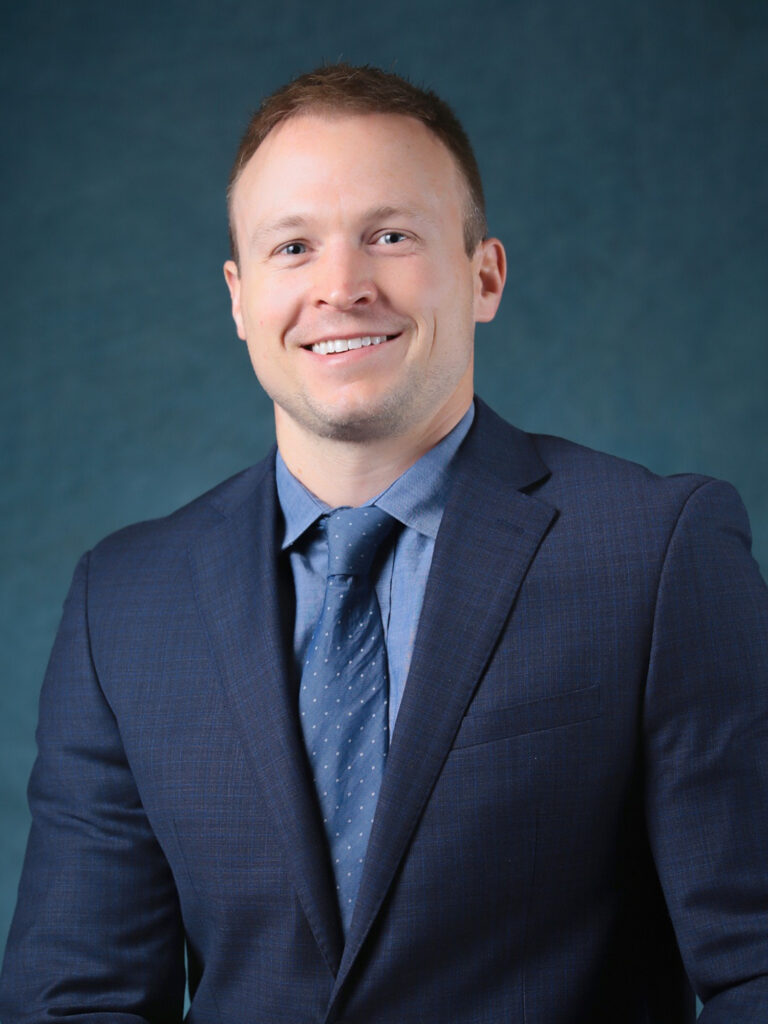Volleyballer Undergoes Unique Kneecap Surgery

After spending the day in the office processing insurance claims, 35-year-old Andrew Bussan, Princeton, Ill, likes to blow off steam with his fellow volleyball players in a recreational league.
“I belong to a co-ed league called ‘Hits and Giggles,’ and we like to play after work a couple of nights a week. I’ve played on sand, grass, and traditional volleyball courts. The fast-paced athleticism and social aspects make it so much fun.”
Andrew is riding a new wave as volleyball’s popularity in the US is growing. Sportico, reports USA Volleyball membership has increased by 9.6% to 408,000 (the largest percentage growth since 1998), and the growth was reflected at all levels of play, all genders, and all age groups.
“I have a knack for it and play several positions all over the court.”
Andrew says he’s always loved being very active from playing high school football in Scales Mound, Ill, near Galena, to working on his family’s dairy farm.
After attaining his MBA at the University of Dubuque, he discovered volleyball was the perfect outlet, and says he used to compete three nights a week until one game play and rough landing sent him to ORA Orthopedics.
“On my first swing of the game, I heard something snap. I came down and my right foot wasn’t underneath me. I landed on my left foot and my right knee buckled.
“I got myself up and hobbled back to the car. I couldn’t walk well or put any weight on my knee, and it felt tight and throbbing.”
Blocked by Injury, but Not for Long
A quick internet search for sports medicine specialists brought him to ORA’s website and within a day, he had an appointment with Sports Medicine Surgeon, Dr. Kevin Hodge.
“I called on a Monday and ORA got me in with Dr. Hodge right away. I researched him and he was a pretty good dude. I met him less than two days later.
“He evaluated me and diagnosed a patellar injury. The MRI confirmed his diagnosis, and I was literally in surgery three days after my injury.”
“Volleyball is a high-impact sport and makes incredible demands on the knee,” explains Dr. Hodge. “Players are jumping, landing and twisting, so the potential for a knee injury is there.
“Andrew experienced significant knee pain, swelling and was unable to walk. His patellar tendon had ruptured. The patellar tendon sits below the kneecap and allows one to extend the knee. Surgery is necessary because he could not have walked or extended his knee without it.”

Serving Up a Comeback

Dr. Hodge performed a procedure called a “patellar tendon repair.” In the one-hour outpatient procedure, he reattached Andrew’s tendon to the bone.
“I do about five to 10 of these procedures a year, and although infrequent, they are critical to a patient’s ability to walk.”
Dr. Hodge says advancements in surgical techniques designed to optimize tendon-to-bone healing, high-strength suture technology, and accelerated rehabilitation have been shown to improve functional recovery and facilitate earlier return to activity following patellar tendon repair.
Five months later, Andrew is back on the volleyball court, playing one game a week.
“My recovery has been good. I can bend my knee now and my muscles are coming back well. I jump on it and change directions, so I feel it’s getting stronger.
“Dr. Hodge was relatable and very straightforward about my options and recovery. I am very happy to be back It could not have gone any better. I cannot wait to play more volleyball!”

